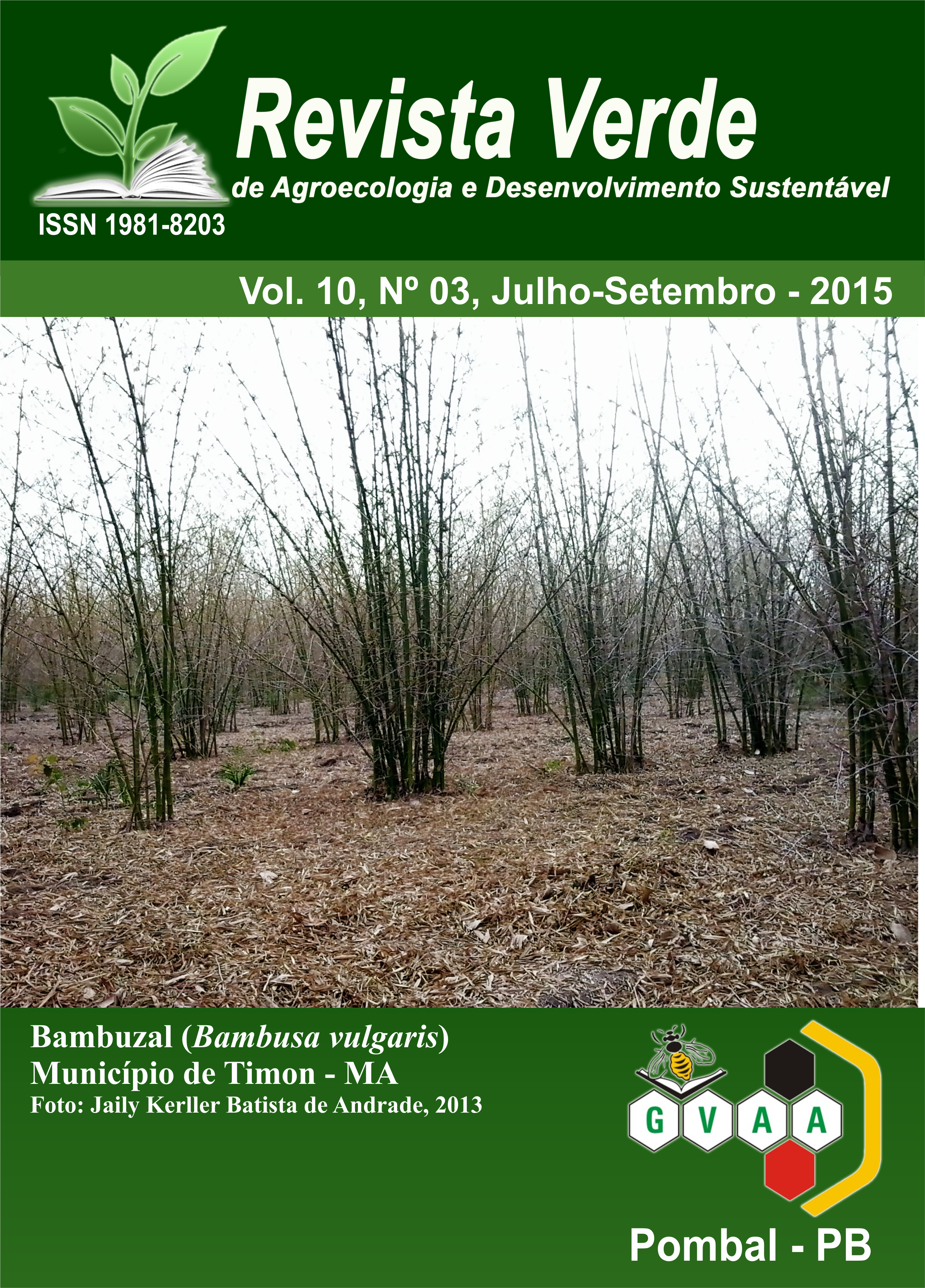Prospecção e isolamento de actinomicetos com potencial para promoção de crescimento em rúcula (Eruca sativa L.)
Palabras clave:
micro-organismos, compostagem, bactéria, hortaliças, actinomycetalesResumen
Actinomicetos são bactérias Gram negativas, encontradas em compostagens, e ambientes extremos. Objetivou-se por meio deste estudo, a bioprospecção de actinomicetos isolados de compostagem e inoculados em sementes de rúcula. O isolamento foi feito em três composteiras, sendo: Cana, Resíduo doméstico e Fibra de coco. O delineamento experimental foi inteiramente casualizado, constituído de sete tratamentos. Os resultados obtidos foram submetidos à análise estatística pelo teste de Scott Knott a 0,05% de probabilidade. Para altura de planta, os tratamentos diferiram estatisticamente entre si, sendo T7 com os menores valores. Para o número de folhas, as médias diferiram entre si, sendo a T7 com o menor valor. O diâmetro do coleto diferiu apenas para T7 e T2. O comprimento radicular diferiu apenas para o T3 e T7, com os menores valores. Para a fitomassa, o T3, apresentou os melhores resultados. Para a matéria seca, houve diferença apenas para T6 e T7. Os actinomicetos apresentaram um bom potencial de promoção de crescimento.
Prospecting and isolation of actinomycetes with potential to growth promotion in arugula (Eruca sativa L.)
Abstract: Actinomycetes are Gram negative bacteria found in compost, and extreme environments. The objective of bioprospecting of actinomycetes isolated from compost and inoculated seeds of arugula. The isolation was done in three composters, being: cane, household waste and coir. The experimental design was completely randomized, consisting of seven treatments. The results were subjected to statistical analysis by the Scott Knott test at 0.05% probability. For plant height, the treatments were statistically different, with T7 with the lowest values. For the number of sheets, the mean differ from each other, with T7 being the smallest value. The stem diameter differed only for T2 and T7. The root length differed only for the T3 and T7, with the lowest values. For biomass, T3, showed the best results. For dry matter, the only difference was for T6 and T7. Actinomycetes showed a good potential for growth promotion.











